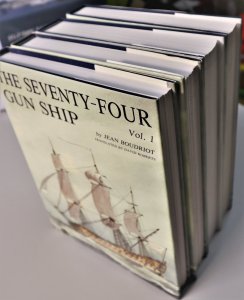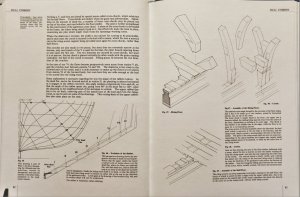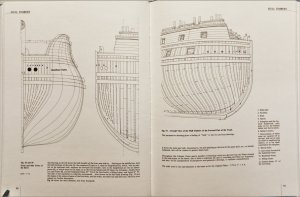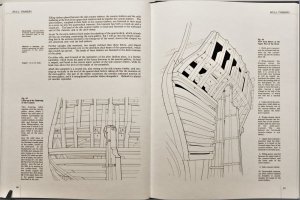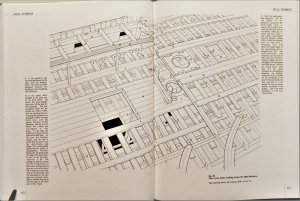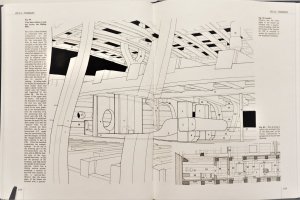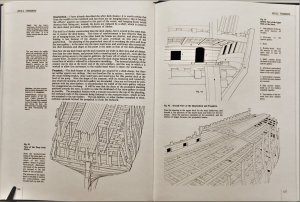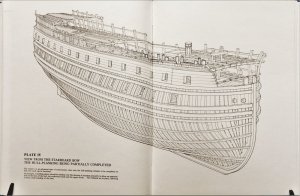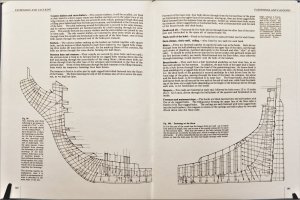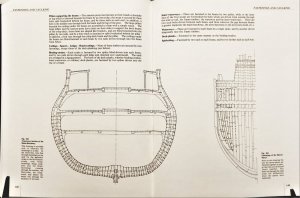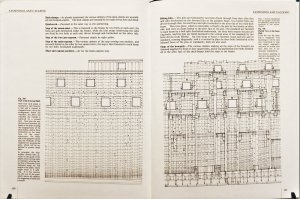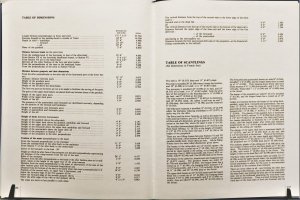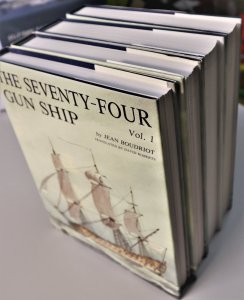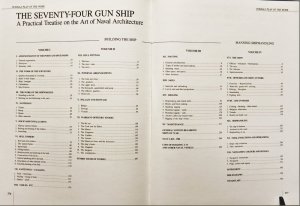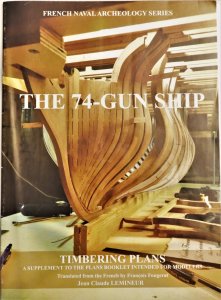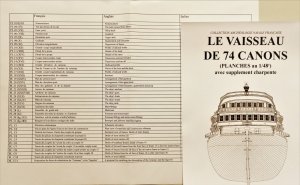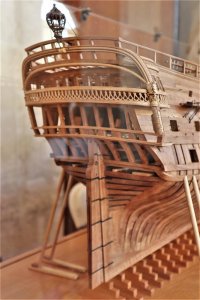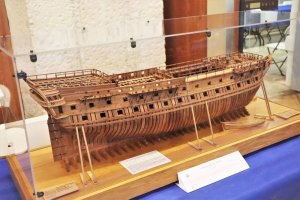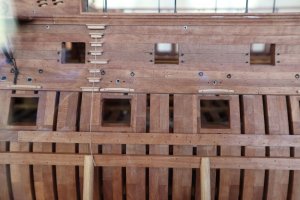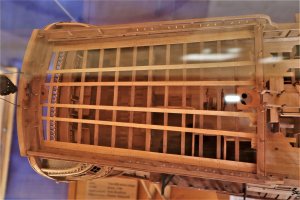Book Review:
THE 74-Gun SHIP / THE SEVENTY-FOUR GUN SHIP
A Practical Treatise on the Art of Naval Architecture
4 Volume Set (Set of 4 volumes)
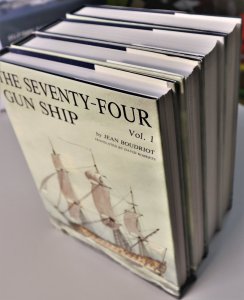
Overview of the Content of all 4 Volumes
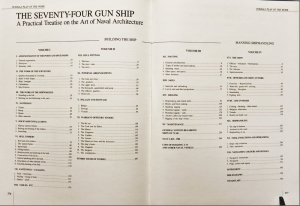
Here:
Volume 1 - HULL CONSTRUCTION
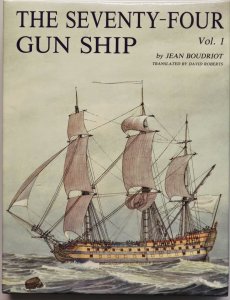
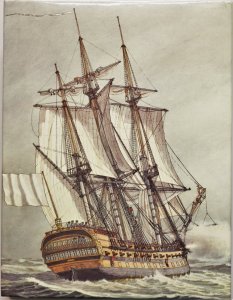
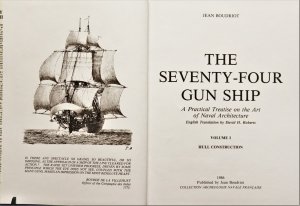
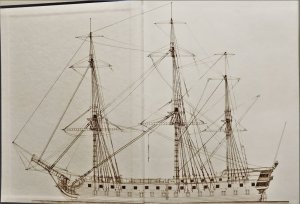
by Jean Boudriot
english translation by David H. Roberts
This Book Set from Jean Boudriot is also in our forum very often mentioned, but most of modelers, which had the copy never in hand can not imagine how detailed and informative this documentation is in real. It is the basic cornerstone of all the Plansets and monographies published over the years by ancre.
Due to the fact, that these books are in my opinion one of the most important publications I want to show you these four different volumes, but also the planset of the 74-gunner, in detail.
Please have in mind, that these books were already published in 1973 (french version), so Jean Boudriot prepared all these drawings and perspective sketches in the books by hand.
In 1985 the english copies with translation by David H. Roberts were published and shown here in the following Book Reviews......
english version still available at ancre:
https://ancre.fr/en/basic-books/9-v...llection.html#/tome-the_74_gun_ship_1_english
detailed explanation of the hull dimensions and reading a drawing and lines
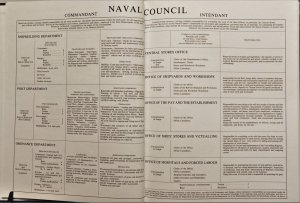
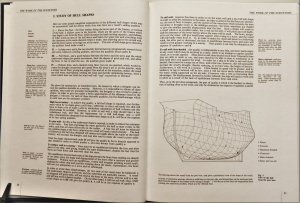
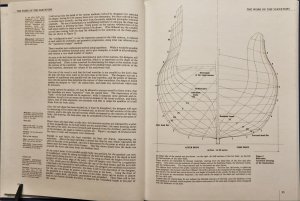
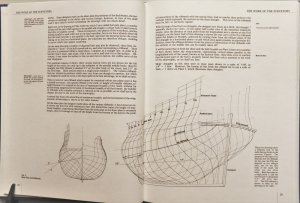
SYNOPSIS:
This 4 volume set is the starting point of our collection and as such is almost essential to the understanding of all our other books. It gives the definitions of all parts of a ship, " from keel to mast's truck", illustrated with many detailed drawings. It also explains how to manœuvre and operate a ship, and what shipboard life was like.
In order to avoid unnecessary repetitions, these explanations and definitions are not given in our other publications, in which you will find numerous cross-references to "The 74 Gun Ship".
ABOUT THE AUTHOR
Jean Boudriot (20. March 1921 - 22 February 2015)
Jean Boudriot was an exceptional Frenchman. Originally an architect, he was an outstanding draughtsman and in only a few years' time became the first specialist in 17th and 18th century naval architecture. He was first interested in the study of French statutory arms, on which he published four books that were accepted as authorities. In 1960, he moved on to studying naval archeology.
J. Boudriot's first studies on naval guns, published in 1969 in Neptunia, are true revelations for amateurs. Between 1973 and 1977, he published the four volumes of "The 74 GUN SHIP" thus creating the Boudriot myth. Since then, he had dedicated his time to scouring the archives in Paris in winter, and to drawing in Charente in summer. For our utmost pleasure, Jean Boudriot regularly published the monographs and historical studies that constitute the French Naval Archeology Collection. He worked very close with Hubert Berti, with whom he run ancre. Nowadays ancre is organized by Berti´s son Didier Berti.
Boudriot was both an author and a publisher. He also teached the weekly naval archeology seminar that took place in the Musée de la Marine, and gave numerous lectures, most of them in the Sorbonne. He was a talented speaker and hearing him speak on his topic was an enchanting event.
THE METHOD
While the shape of things to come is not set at the beginning of the book, principles are well established there. Boudriot started with primary sources by systematically studying models in the arsenals and by doing daily archival research in every harbour in France. He neglected nothing : neither the theoretical contributions brought by such authors as Duhamel du Monceau, Romme, Bouguer or Vial du Clairbois, nor the valuable iconographic documents provided by such draughtmen as Puget, Ozanne, Vernet, Guéroult du Pas and Sponsky de Passebon, etc. But the practical drawing booknotes of anonymous engineers, the more modest wood estimates by master carpenters or the inventories of a warehouse were even more important.
Only the irrefutable document is to be taken into account : engineers' plans, construction, equipping and campaigning estimates; correspondence and manuscripts of the time.
Because of his talent as a draughtman and because of his architect's training, Jean Boudriot is convinced that naval archeology - because it is a restitution of the past - can only be approached through drawing, the only true means of expression and understanding it. His rigorous and magical lines, with their lively and familiar style, immerse the reader in the atmosphere of the 17th, 18th and 19th ports and ship building sites throughout his numerous books.
THE SHIP
As the main naval war machine at the end of the 18th century, the 74 Gun Ship was the result of a compromise, like every successful vessel. Her balance between strong guns and manoeuvrability offered by the 28 gun lower gundeck and firing 36 pound cannon-balls, made the "74" the perfect ship of the line. Since she moved more easily, she was much more useful in combat than the heavy 100 gun three-decker.
Her hull alone represented half of 3000 tons moving. 2800 hundred-year-old oak trees (a whole forest), and 600 tons of iron and wood bolts were needed for her construction. The hold and its orlop-deck could contain victuals for 6 months and water for 12 weeks. The gundeck had to bear the considerable weight of enormous 36-pdr guns, weighing 4 tons each. The upper deck, covered front and back with castles, carried lighter guns.
This hull rose 7 meters above water and carried prodigious flights of sails. Each of the three masts, in three elements, rigged three floors of square sails and the main top-mast truck towered at 60 meters. This ship was well designed by her engineer and when correctly used by her crew, she performed superbly at sea in all weathers. In a fair breeze, she could exceed ten knots by sailing quartering.
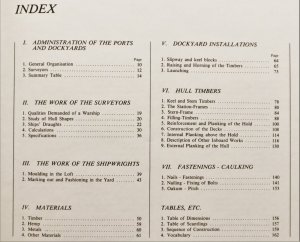
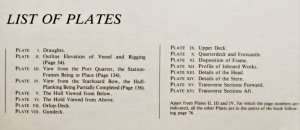
CONTENT OF VOLUME 1 - HULL CONSTRUCTION
I ADMINISTRATION OF THE PORTS AND DOCKYARDS (pages 10 to 18)
1 General Organisation
2 Sureveyors
3 Summary Table
II THE WORK OF THE SURVEYORS (pages 19 to 38)
1 Qualities Demanded of a Warship
2 Study of Hull Shapes
3 Ships´ Draughts
4 Calculations
5 Specifications
III THE WORK OF THE SHIPWRIGHTS (pages 39 to 49)
1 Moulding in the Loft
2 Marking out and Fashioning in the Yard
IV MATERIALS (pages 50 to 63)
1 Timber
2 Hemp
3 Metals
4 Other Materials
V DOCKYARD INSTALLATIONS (pages 64 to 77)
1 Slipway and keel blocks
2 Raising and Horning of the Timbers
3 Launching
VI HULL TIMBERS (pages 78 to 139)
1 Kell and Stem Timbers
2 The Station-Frames
3 Stern-Frame
4 Filling-Timbers
5 Reinforcement and Planking of the Hold
6 Construction of the Decks
7 Internal Planking above the Hold
8 Description of Other Inboard Works
9 External Planking of the Hull
VII FASTENINGS – CAULKING (pages 140 to 155)
1 Nails – Fastenings
2 Nailing – Fixing of Bolts
3 Oakum – Pitch
TABLES , etc (pages 156 to 165)
1 Table of Dimensions
2 Table of Scantlings
3 Sequence of Construction
4 Vocabulary
LOOK INSIDE:
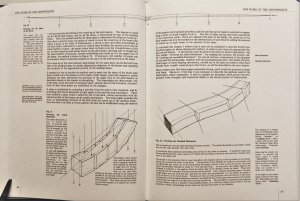
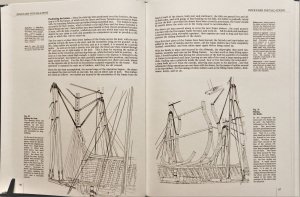
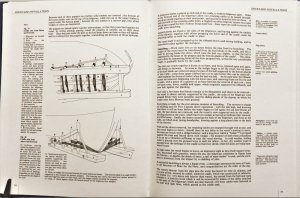
The drawings of the book (see also the list of drawings)

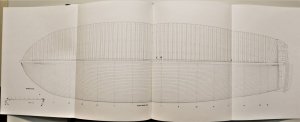
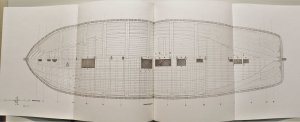
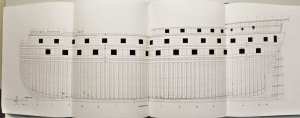
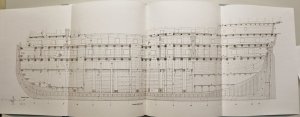
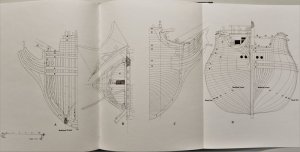
With every drawing you have detailed explanations and an index
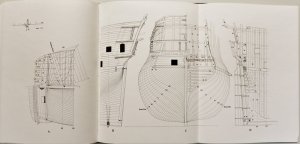
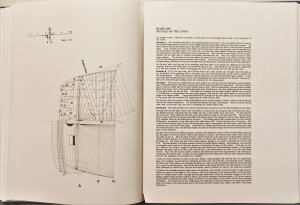
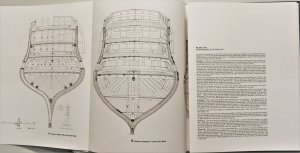
Take also a look at the second part of Look Inside in the following post...... to be continued ......
THE 74-Gun SHIP / THE SEVENTY-FOUR GUN SHIP
A Practical Treatise on the Art of Naval Architecture
4 Volume Set (Set of 4 volumes)

Overview of the Content of all 4 Volumes

Here:
Volume 1 - HULL CONSTRUCTION




by Jean Boudriot
english translation by David H. Roberts
This Book Set from Jean Boudriot is also in our forum very often mentioned, but most of modelers, which had the copy never in hand can not imagine how detailed and informative this documentation is in real. It is the basic cornerstone of all the Plansets and monographies published over the years by ancre.
Due to the fact, that these books are in my opinion one of the most important publications I want to show you these four different volumes, but also the planset of the 74-gunner, in detail.
Please have in mind, that these books were already published in 1973 (french version), so Jean Boudriot prepared all these drawings and perspective sketches in the books by hand.
In 1985 the english copies with translation by David H. Roberts were published and shown here in the following Book Reviews......
english version still available at ancre:
https://ancre.fr/en/basic-books/9-v...llection.html#/tome-the_74_gun_ship_1_english
detailed explanation of the hull dimensions and reading a drawing and lines




SYNOPSIS:
This 4 volume set is the starting point of our collection and as such is almost essential to the understanding of all our other books. It gives the definitions of all parts of a ship, " from keel to mast's truck", illustrated with many detailed drawings. It also explains how to manœuvre and operate a ship, and what shipboard life was like.
In order to avoid unnecessary repetitions, these explanations and definitions are not given in our other publications, in which you will find numerous cross-references to "The 74 Gun Ship".
ABOUT THE AUTHOR
Jean Boudriot (20. March 1921 - 22 February 2015)
Jean Boudriot was an exceptional Frenchman. Originally an architect, he was an outstanding draughtsman and in only a few years' time became the first specialist in 17th and 18th century naval architecture. He was first interested in the study of French statutory arms, on which he published four books that were accepted as authorities. In 1960, he moved on to studying naval archeology.
J. Boudriot's first studies on naval guns, published in 1969 in Neptunia, are true revelations for amateurs. Between 1973 and 1977, he published the four volumes of "The 74 GUN SHIP" thus creating the Boudriot myth. Since then, he had dedicated his time to scouring the archives in Paris in winter, and to drawing in Charente in summer. For our utmost pleasure, Jean Boudriot regularly published the monographs and historical studies that constitute the French Naval Archeology Collection. He worked very close with Hubert Berti, with whom he run ancre. Nowadays ancre is organized by Berti´s son Didier Berti.
Boudriot was both an author and a publisher. He also teached the weekly naval archeology seminar that took place in the Musée de la Marine, and gave numerous lectures, most of them in the Sorbonne. He was a talented speaker and hearing him speak on his topic was an enchanting event.
THE METHOD
While the shape of things to come is not set at the beginning of the book, principles are well established there. Boudriot started with primary sources by systematically studying models in the arsenals and by doing daily archival research in every harbour in France. He neglected nothing : neither the theoretical contributions brought by such authors as Duhamel du Monceau, Romme, Bouguer or Vial du Clairbois, nor the valuable iconographic documents provided by such draughtmen as Puget, Ozanne, Vernet, Guéroult du Pas and Sponsky de Passebon, etc. But the practical drawing booknotes of anonymous engineers, the more modest wood estimates by master carpenters or the inventories of a warehouse were even more important.
Only the irrefutable document is to be taken into account : engineers' plans, construction, equipping and campaigning estimates; correspondence and manuscripts of the time.
Because of his talent as a draughtman and because of his architect's training, Jean Boudriot is convinced that naval archeology - because it is a restitution of the past - can only be approached through drawing, the only true means of expression and understanding it. His rigorous and magical lines, with their lively and familiar style, immerse the reader in the atmosphere of the 17th, 18th and 19th ports and ship building sites throughout his numerous books.
THE SHIP
As the main naval war machine at the end of the 18th century, the 74 Gun Ship was the result of a compromise, like every successful vessel. Her balance between strong guns and manoeuvrability offered by the 28 gun lower gundeck and firing 36 pound cannon-balls, made the "74" the perfect ship of the line. Since she moved more easily, she was much more useful in combat than the heavy 100 gun three-decker.
Her hull alone represented half of 3000 tons moving. 2800 hundred-year-old oak trees (a whole forest), and 600 tons of iron and wood bolts were needed for her construction. The hold and its orlop-deck could contain victuals for 6 months and water for 12 weeks. The gundeck had to bear the considerable weight of enormous 36-pdr guns, weighing 4 tons each. The upper deck, covered front and back with castles, carried lighter guns.
This hull rose 7 meters above water and carried prodigious flights of sails. Each of the three masts, in three elements, rigged three floors of square sails and the main top-mast truck towered at 60 meters. This ship was well designed by her engineer and when correctly used by her crew, she performed superbly at sea in all weathers. In a fair breeze, she could exceed ten knots by sailing quartering.


CONTENT OF VOLUME 1 - HULL CONSTRUCTION
I ADMINISTRATION OF THE PORTS AND DOCKYARDS (pages 10 to 18)
1 General Organisation
2 Sureveyors
3 Summary Table
II THE WORK OF THE SURVEYORS (pages 19 to 38)
1 Qualities Demanded of a Warship
2 Study of Hull Shapes
3 Ships´ Draughts
4 Calculations
5 Specifications
III THE WORK OF THE SHIPWRIGHTS (pages 39 to 49)
1 Moulding in the Loft
2 Marking out and Fashioning in the Yard
IV MATERIALS (pages 50 to 63)
1 Timber
2 Hemp
3 Metals
4 Other Materials
V DOCKYARD INSTALLATIONS (pages 64 to 77)
1 Slipway and keel blocks
2 Raising and Horning of the Timbers
3 Launching
VI HULL TIMBERS (pages 78 to 139)
1 Kell and Stem Timbers
2 The Station-Frames
3 Stern-Frame
4 Filling-Timbers
5 Reinforcement and Planking of the Hold
6 Construction of the Decks
7 Internal Planking above the Hold
8 Description of Other Inboard Works
9 External Planking of the Hull
VII FASTENINGS – CAULKING (pages 140 to 155)
1 Nails – Fastenings
2 Nailing – Fixing of Bolts
3 Oakum – Pitch
TABLES , etc (pages 156 to 165)
1 Table of Dimensions
2 Table of Scantlings
3 Sequence of Construction
4 Vocabulary
LOOK INSIDE:



The drawings of the book (see also the list of drawings)






With every drawing you have detailed explanations and an index



Take also a look at the second part of Look Inside in the following post...... to be continued ......
Attachments
Last edited:


